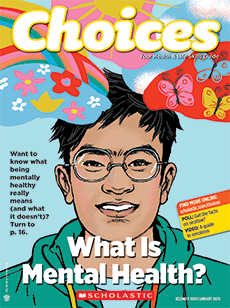When Thyra Foronda was in middle school, she spent hours folding sticky notes and gum wrappers into heart shapes. She slipped the hearts in between lockers and left them in the halls of her school in Troy, Michigan. Meanwhile, more than a thousand miles away in Houston, Texas, Vivian Liu was folding paper into fortune tellers with her grandmother. She brought her paper creations to school and handed them out to friends.
In 2024, the girls, who are both 16, connected on Instagram over their love of origami, the art of folding paper into shapes. As they bonded over the ways origami had brought joy and calm to their lives, they decided to use their hobby to help others. Today they are the co-founders of Origami for Good, a nonprofit organization that brings teens together to make origami for senior centers, hospitals, veterans’ homes, and more. Origami for Good now has more than 200 chapters across 43 states and 50 countries. Here’s how Thyra and Vivian turned their passion into a global project.
